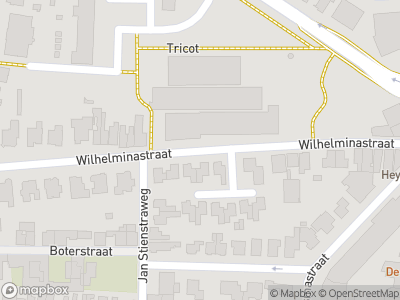Winterswijk owes a great deal to the textile industry. The industry attracted workers from across the country and stimulated the establishment of housing associations, sports facilities, railways and new schools. The chimneys were plentiful and defined the landscape. The Willink family owned three mills and was the largest employer in Winterswijk. Almost everybody would have had at least one member of the family that worked there.
Textile family
Winterswijk had a weavers’ guild from as early as the 16th century. The weavers were self-employed people who worked from home on their own looms. Textile merchants supplied new yarn and took away the textiles. One such drapery firm was the Willink family. In 1819, Abraham Willink married Christina ten Cate, a descendant ofa textile family fromTwente. The couple arranged for their children to train in companies in Germany and more particularly Great Britain, which was the centre of the textile industry.
Tricot
In 1888, Geert Jan Willink started his own company. He had learnt the trade at Batavier, the steam weaving mill owned by his uncle Jan. Jan was an enterprising man who even helped Winterswijk develop its own railway line. His nickname was RailwayJan. In the coach house of uncle Jan’s villa, Geert Jan spent two years experimenting with mechanical knitting on knitting machines. In 1890, he opened his own knitting mill, which mainly produced underwear. The company was called Tricot and Geert’s nickname soon became Tricot Jan.
Apartment complex
By 1929 the company employed more than 1,100 people. Around that time, the architects Beltman and Son designed a new knitting mill with austere concrete lines. The company survived the crisis years and the war and even experienced a strong revival in the 1950s. But ultimately, it succumbed to the growing competition from low-wage countries. It merged with Bleijdenstein in 1960, but had to close in 1978. The huge mill lay empty for years and eventually burnt down. Beltman’s striking building was nevertheless given a new lease of life and has now been transformed into a stylish apartment complex.















